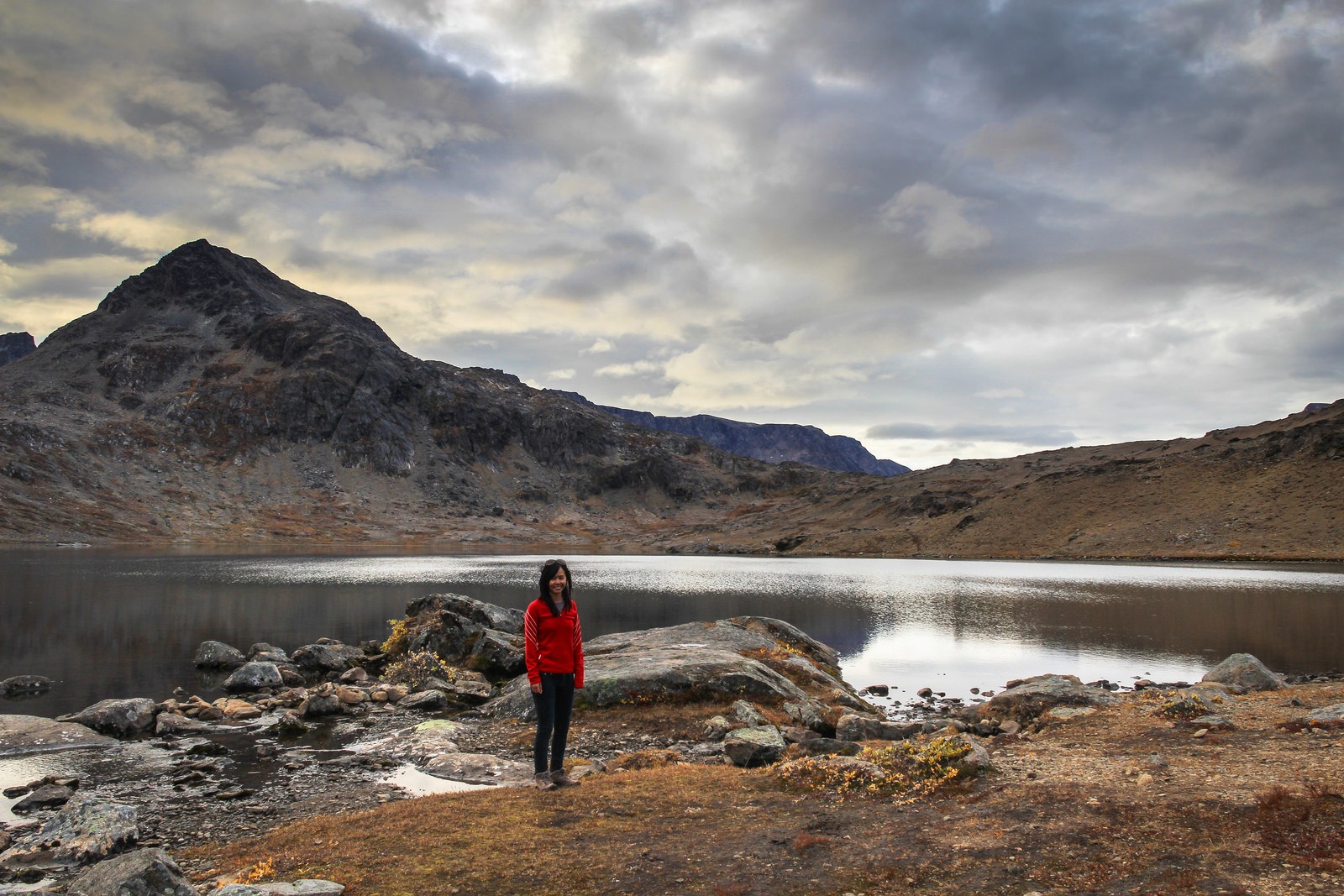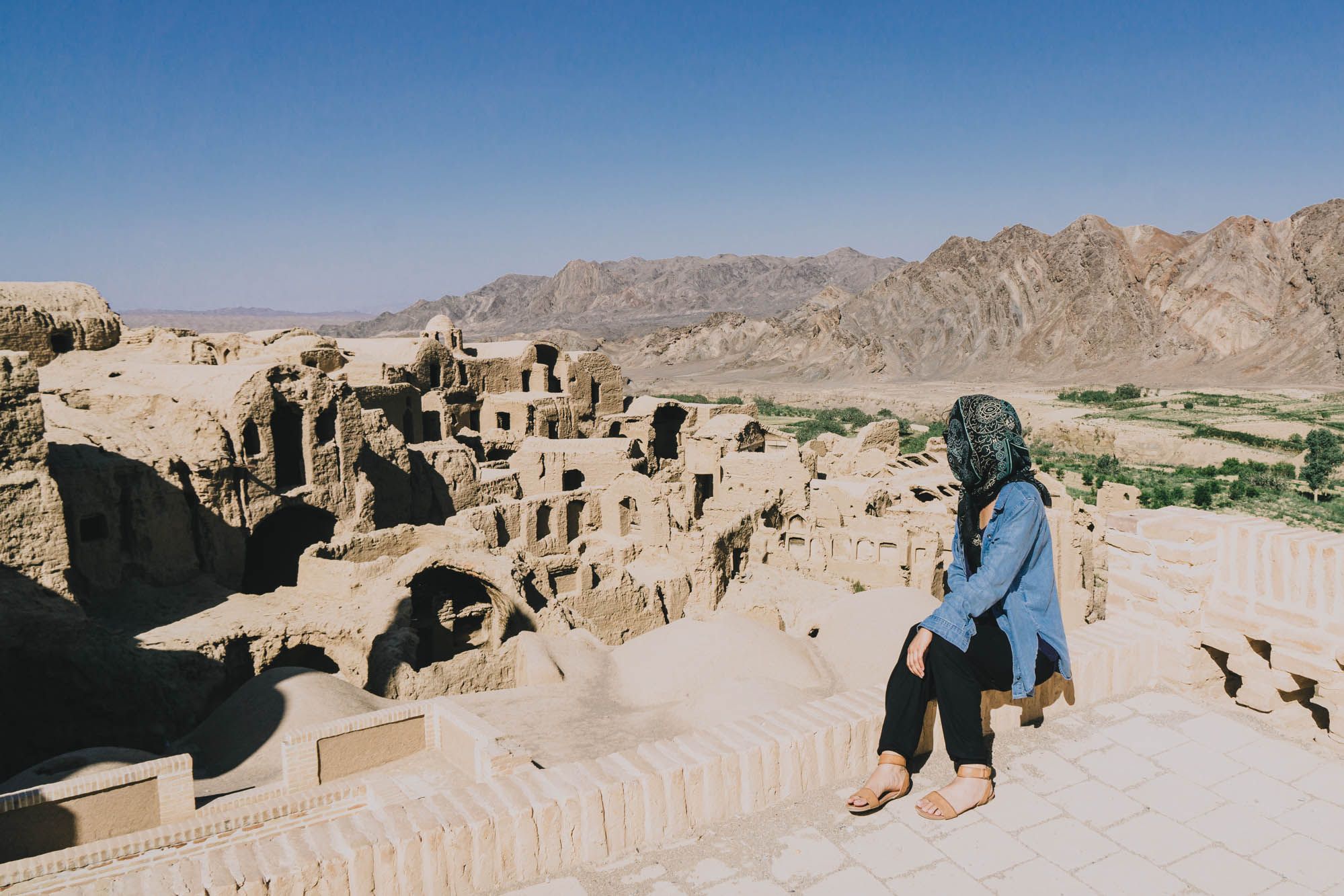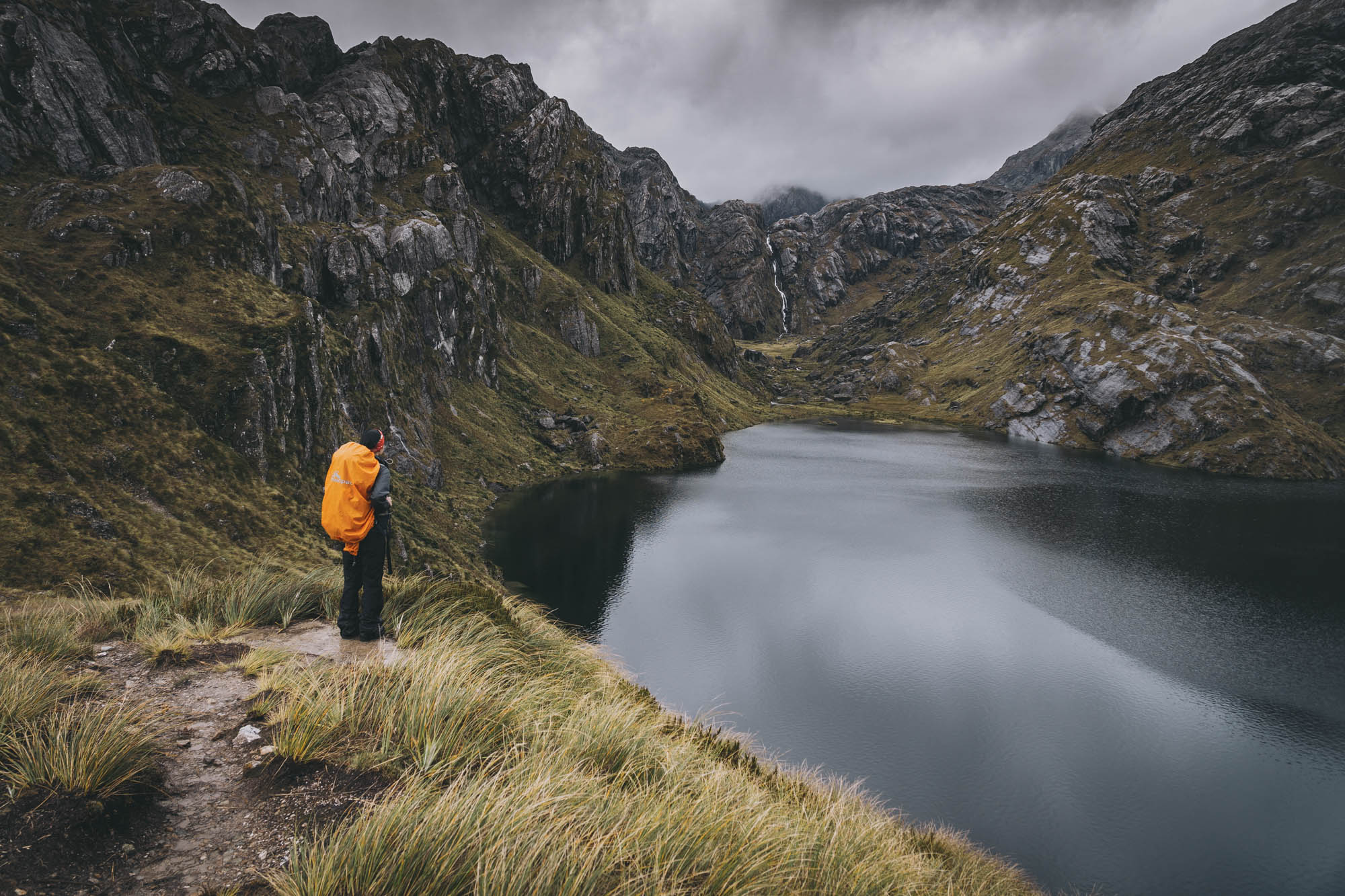Nestled in the arid deserts of central Iran lies the ancient city of Yazd, a UNESCO World Heritage site and home to one of the most unique and mysterious sites of the Zoroastrian faith – the Towers of Silence. These ancient structures, known as dakhmas, were once used as open-air burial grounds for followers of the Zoroastrian religion, an ancient religion which dates back over 3000 years.
I visited these unique structures during my trip to Iran in 2017, and while certainly a tad on the side of macabre, it was amazing to see such an ancient, sacred site of the Zoroastrians in person.
If you’re interested in history and culture, and places a little off the beaten track, the Towers of Silence in Yazd are a great place to explore.

But first – what is Zoroastrianism?
Zoroastrianism is an ancient religion that originated in Persia (modern-day Iran) and was once Persia’s dominant faith. It was founded by and named after a prophet named Zarathustra (Zoroaster in Greek) over 3000 years ago, and is considered one of the world’s oldest organised faiths, if not the oldest monotheistic (believing in one god, rather than in several) faith.
Zoroastrians believe in one supreme being, called Ahura Mazda, and the religion emphasises the battle between good and evil. Fire is considered a manifestation of Ahura Mazda and a sacred symbol of purity and divinity.
It is common to see eternal flames burning in Zoroastrian temples, and you can visit some of these in Yazd, and in other parts of Iran (especially Kerman) and in India.

Zoroastrianism is thought to have had significant impacts on the development of other religions and has influenced everything from philosophy to art, though itself has dwindled in popularity. In Iran, Zoroastrianism was eventually displaced by Islam, which resulted in many Zoroastrians migrating to India.
It is estimated that less than 150,000 people worldwide still follow this religion. The majority of remaining Zoroastrians live in India, where they are known as Parsis, and in Iran, where they are recognised as a religious minority.
For Zoroastrians, Yazd is a sacred city and a symbol of the long history of their faith. Even today, there is a significant population of Zoroastrians in Yazd, and the city remains an important centre of their community and culture.
Fun fact – Freddie Mercury was Zoroastrian.
What were the Towers of Silence used for in Zoroastrianism?
According to Zoroastrian beliefs, the body is considered impure after death and can be inhabited by demons (nasu); it should not pollute the earth, water or fire, all of which are considered sacred elements. Because of this, the bodies of the deceased were brought to the Towers of Silence and left to decompose naturally in the open air, exposed to the elements and the vultures that would gather to feed on their remains.
This unique and somewhat macabre custom was practiced in Yazd for centuries, until it was outlawed by the Iranian government in the 1970s. Presumably, there were public health reasons for this, especially since population growth meant cities had expanded in size and were now much closer to the burial sites. A decline in vulture numbers also meant bodies were not being cleaned as quickly as they used to, increasing the risk of disease.

Today, the Towers of Silence remain a haunting reminder of this ancient burial practice and the rich cultural heritage of the Zoroastrian community in Iran. As they are no longer in active use, visitors can explore the abandoned structures and contemplate the rich history and beliefs of this fascinating religion.
Modern-day Zoroastrians still retain their beliefs and there is a new cemetery located near to the Towers of Silence where graves are lined with rock and plastered with cement to prevent contact between the body and the earth.
Where are the Towers of Silence?
The Towers of Silence are located in the city of Yazd, in central Iran. Yazd is an ancient city and is known for its unique architecture and rich cultural heritage. The city is also famous for its Zoroastrian heritage, and the Towers of Silence are one of the most prominent examples of this.
The Towers of Silence are situated on a hilltop on the outskirts of the city and also offer stunning views of the surrounding landscape. The location was deliberately chosen by ancient Zoroastrians to be some distance away from the areas where people live, an early example of public health in action!

How do I get to the city of Yazd?
Yazd is located in central Iran and is easily accessible by car, bus, train, or plane. The nearest airport is the Shahid Sadooghi Airport located about 10km from the city centre, which has flights to and from major cities in Iran. The city is also well-connected by bus, with frequent services to and from Tehran and other major cities in Iran.
If you prefer to take the train, Yazd has a railway station with regular services to Tehran and other cities in Iran. Once you arrive in Yazd, you can easily hire a taxi or take a local bus to the Towers of Silence.
How do I get to the Towers of Silence?
The Towers of Silence are located on the outskirts of the city of Yazd, Iran. You can get there by taking a taxi or driving, which takes about half an hour from the city centre. There is also a public bus that runs from the city centre to the nearby village of Taft, which is within walking distance of the Towers of Silence.
It is also possible to hire a guide or join a tour group to visit the site – this is a great idea if you’d like to delve more into the history and significance of the place.

Keep in mind that the towers are located on a hill and the climb up to them can be steep, so visitors should be prepared for a bit of a hike. It is completely exposed and can get very hot in summer.
NOTE: The site is open to visitors during daylight hours and while it was free when I visited in 2017, I understand there is now a small entrance fee.
What is it like visiting the Towers of Silence?
The Towers of Silence are a vast, open-air site located on the outskirts of Yazd, Iran. The site is almost completely exposed, and in the midst of summer, is looks especially barren and is super hot. The two Towers of Silence, or dakhma, are obviously the main attraction and really are impossible to miss, perched atop two hills and jutting out of the desert landscape.


Clustered at the base of the dakhma are what looks like a small village of brick, rock and adobe buildings. Because families had to travel a long way to get to the burial site, small accommodation complexes (khayleh) were provided for them to rest and conduct rituals. Each local village had its own dedicated khayleh for families to use.
Many of these are still well preserved and boast the same unique architecture that you can see around the ancient city of Yazd, just on a much smaller scale. We were even able to walk into some of the ruins to explore.





Other buildings include one for fire rituals (which were a customary part of funeral rites), a wind-catcher, and a building for preparing the body of the deceased.
Additionally, one building was the dedicated dwelling of the salar, who was the person in charge of the whole complex and of overseeing the funerary rituals. The salar was essentially the caretaker of the dead, and his job included taking the bodies up onto the towers, conducting the rituals and then later moving the bones into the ossuary pits, and eventually disposing of them.
The salar was relegated to living his entire life at the site of the dakhma, and was not permitted to leave. There were probably public health reasons for this, given that infectious disease was a common cause of death back then, and the salar would’ve been constantly exposed.
Still, it would’ve meant a very isolated life.



The main attraction at this site is obviously the Towers of Silence themselves. From the buildings, a short walk leads you to their bases. There are two dakhma, and it is possible to climb to the very top of both.
The tallest tower is the older of the two, and was apparently constructed by a famous Zoroastrian Parsi who moved from India to Iran to negotiate for the rights of Persian Zoroastrians. This dakhma is named Mankeji Hutra Dakhma after him. It is made of bricks and clay and has a long road that winds all the way up the tower.



As you might be able to tell by looking at that long, winding road, it was quite difficult for people to access Mankeji Hutra Dakhma, so a second one was built a little while later just a few hundred metres away.
The second dakhma is apparently named Golestan Dakhma. It’s the shorter, more preserved-looking of the two, and has a staircase that leads to the top of the tower.


We walked to the top of both towers, starting with the smaller Golestan Dakhma first and finishing with the larger Mankeji Hutra Dakhma. This is a great order to do them in in terms of building up the views. It doesn’t take very long to get up – I’ve read blogs saying 20-30 minutes, and it of course depends on your fitness levels and how hot the day it, but it took us much less time than that, especially for Golestan Dakhma.
At the top of the towers you can see and imagine where the bodies of the deceased would have once been laid out. It’s not obviously demarcated on the surface, but the area was separated out into three rings – children were placed in the ring closest to the centre of the tower, women in the middle layer, and men in the outer layer where the floor meets the tower walls.
Vultures and other birds of prey would’ve perched along the raised tower walls, watching and waiting for the salar to bring up a body.


You can also still see the pit in the centre of the tower, which is where the stripped bones of the dead were eventually thrown into, and dissolved by the elements (with the aid of a lime substance).
It’s quite surreal to be walking around there given its history and purpose, especially since the practice itself is so unlike anything we are used to in the Western world.
Some may even find it a little too morbid, but I still think it’s worth the time to delve into a historical culture so different to what we know.


The walk up to the towers can be steep and rocky, not to mention hot in summer, but it is well worth the effort for the stunning views and the unique cultural experience.
The views from the taller Mankeji Hutra Dakhma are particularly grand, as you can see Golestan Dakhma, all of the adobe buildings, and the city of Yazd and surrounding mountains. You can also see the new Zoroastrian cemetery just beyond the adobe buildings.
Photos of the views below are easier to take as well, as the tower walls are shorter and no longer fully intact, meaning there are areas with no obstruction at all.

You’ll probably need an hour or two to explore the site. It’ll obviously take longer with a guide, but I think it’s a good option for places like this where it can sometimes be hard to understand the significance of what it in front of you.
What other Zoroastrian sites can I visit in Yazd?
Yazd is home to several other notable Zoroastrian sites that are worth checking out during your visit. One such site is the Fire Temple of Yazd, also known as Yazd Atash Behram. This temple is an important place of pilgrimage for Zoroastrians that houses an eternal flame (Atash Behram, meaning ‘Fire of Victory’) that has been burning continuously for over 1,500 years.
Fire is said to be the manifestation of Ahura Mazda, the Zoroastrian deity, hence its holiness.
Atash Behram is actually the highest grade of holy fire in Zoroastrianism (there are three graders), and requires 16 different types of fire sources in its creation. This even includes fire created through lightning strike. The Atash Behram in Yazd is one of only nine in the world, and the only one in Iran (the remaining eight are in India), which makes visiting it pretty special.

Another interesting site is the Zoroastrian History and Culture Museum, which has a collection of artefacts, including traditional Zoroastrian clothing, religious texts, and ancient coins.
Additionally, if you have time for a day-trip, it is worth checking out Chak Chak, one of the most important pilgrimage sites for Zoroastrians. Located about 70 kilometers from Yazd, Chak Chak is home to a beautiful and peaceful Zoroastrian shrine, built within a natural rock cave on the mountainside. The site attracts Zoroastrian pilgrims from Iran, India and elsewhere, who gather there annually, as well as visitors interested in learning more about Zoroastrianism.
You can also combine Chak Chak with a trip to the ruins of the nearby ancient adobe cities of Meybod and Kharanaq, which were some of my favourite spots to explore in Iran.
Additionally, you can of course explore Yazd’s historic district, which has been designated a UNESCO World Heritage site. This area features many traditional mud-brick buildings, narrow winding streets, and a variety of shops and restaurants. There is certainly more to the city of Yazd than just the Towers of Silence and Zoroastrianism!

LIKE THIS POST? PIN IT OR LEAVE A COMMENT BELOW!



Recommended Posts








Leave a Reply